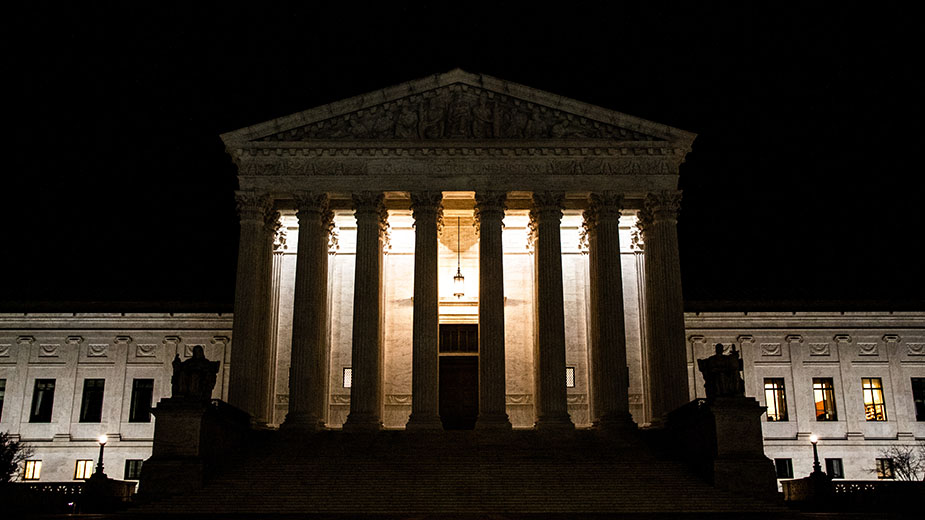U.S. Supreme Court Curbs EPA Authority
By Molly Johnson
Johnson & Johnson Law Firm
YOUNGSTOWN, Ohio – The U.S. Supreme Court curbed the Environmental Protection Agency’s ability to limit greenhouse gas emissions from existing power plants (West Virginia v. EPA).
In a 6-3 ruling handed down June 30, the court held that the Obama-era Clean Air Act did not grant the EPA broad authority to shift the nation’s energy production to allegedly “cleaner” sources.
That is to say, the EPA on its own cannot force America away from coal to solar and wind power without explicit authorization from Congress.
The justices agreed with the lawyers from Ohio’s neighbor and landmark coal-producer, West Virginia, who said that Congress did not explicitly give environmental regulators broad authority to reshape the system for producing electric power by switching from coal to natural gas, wind turbines and solar energy.
The court decreed that Congress, not the EPA, has the appropriate authority to make decisions on energy generation — and more indirectly — on climate change. This is a major departure from how American energy generation has been recently regulated under the EPA.
Historically, acts of Congress were the foundational laws addressing problems involving industry. This changed during the 1930s — mostly as part of President Franklin D. Roosevelt’s New Deal Plan — when governmental agencies came to life.
Congress delegated to these agencies the authority to pass rules that would effectively govern the areas of industry and commerce within their expertise.
The agencies fulfilled this mandate, passing rules and regulations that used to be the sole responsibility of Congress.
This went largely unchallenged for many years by the Supreme Court, which generally deferred to agency decision-making concerning matters related to the environment, pharmaceutical industry, health care and transportation.
With this most recent ruling, the Supreme Court has indicated a willingness to challenge the historical deference to agencies’ rulemaking, placing a larger onus on the legislative branch to fulfill its own mandate to write and pass laws addressing these types of issues.
For example, Chief Justice Roberts wrote, “The agency must point to ‘clear congressional authorization’ for the power it claims.”
The West Virginia v. EPA case will have a direct impact on the coal industry throughout the Midwest, which appears to be celebrating in the wake of the decision. Industries other than energy generation may also be indirectly impacted by this ruling to the extent agency rules now appear more open to challenge in the court system.
With respect to real estate development, if construction activity disturbs one or more acres of land, an owner may have to obtain Clean Water Act permit coverage for discharge of stormwater runoff from the construction site. The permitting process is multistep and can be expensive, whether a permit is ultimately granted or not.
Or if a real estate project generates or handles hazardous wastes such as lead-based paint, fluorescent lamps, insulation, plaster or sheet rock, the owner may also need to implement the regulations described in the Resource Conservation and Recovery Act.
Perhaps the largest impact could be on real estate developers and construction companies that must comply with the EPA’s regulation of wetlands.
The EPA separates wetlands into four categories: marshes, swamps, bogs and fens. The EPA regulates wetlands under Section 404 of the Clean Water Act, in conjunction with the Army Corps of Engineers. There is additional overlap in oversight with the U.S. Fish and Wildlife Service, U.S. Forest Service and U.S. Department of Agriculture.
Given this complex framework, developers often find these regulations overwhelming, and frequently posit that the compliance costs often make their projects wholly uneconomical. “All of this to save a few cattails,” they say.
Here in northeastern Ohio, real estate developers are also familiar with the Indiana brown bat. This bat is protected by the Endangered Species Act, which is administered by two agencies: the U.S. Fish and Wildlife Service and National Marine Fisheries Service, which regulates marine species. All other species, including the Indiana brown bat, are regulated by the Fish and Wildlife Service.
Presently, businesses can only cut down trees between October and March, when the Indiana Brown Bat migrates to Mexico.
Of course, only one particular regulation was at issue in West Virginia v. EPA. But are the regulations relating to wetlands and bats likely to change because of this ruling?
Only time will tell. Thus far, the conservative court appears to have a strong preference for explicit acts of Congress instead of certain agency regulations.
Editor’s Note: This sponsored content from the Johnson and Johnson law firm has been corrected. The correct author is Molly Johnson, not Nils Peter Johnson as originally published. The Business Journal apologizes for the error.
Copyright 2024 The Business Journal, Youngstown, Ohio.



